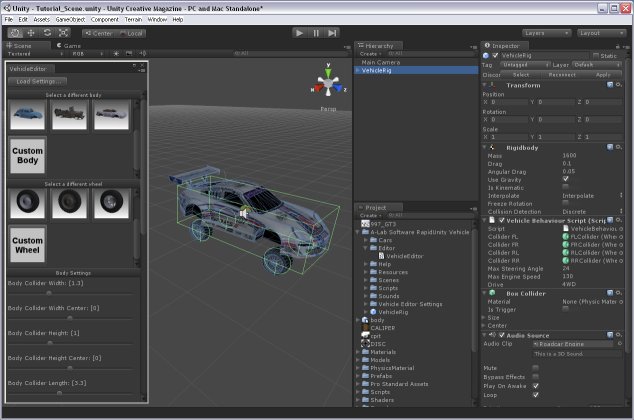

Unity 3d forum install#
Install 3DConnexion driver and make sure it is running (sorry, I couldn't get my head around the quaternion math of manipulating in one coordinate system while constraining in another) Grab Mode only works in the camera coordinate system Package without samples, import this package into your project and get to work.
Unity 3d forum code#
I've prepared the code to make this as painless as possible, just subclass the SpaceNavigator class.

Unity 3d forum mac#
Who knows, somebody with a mac might just step in and code the mac implementation.
Unity 3d forum pro#
The driver supports Unity 3 and 4, both Indie and Pro versions.Īt the moment it is windows-only, but the code is right here. Translation can be snapped to a grid and rotation can be angle-snapped. In GrabMove mode the stuff will be linked to your camera so you can take it with you and position it where you want. (this mode can be operated in Camera-, World-, Parent- and Local coordinates) In Telekinesis mode, you can move the stuff you selected with the SpaceNavigator, while your camera stays put. To move stuff around, you can use 2 modes: Telekinesis and GrabMove.

So you don't have to worry about ending up upside down, just go where you want and get some work done. The default mode is Fly mode and when you're flying around, this driver always keeps your horizon horizontal. You can also use it at runtime via scripting. This driver lets you fly around your scene and allows you to move stuff around. Updated to include improved prefab features - Nested Prefabs and Prefab Variants added in 2018.The driver is now available on the Unity Asset Store.Īctually, the driver should work for all 3dconnexion products, but I've only been able to test it on the SpaceNavigator. The player’s main character - the player prefab might be placed at the starting point on each level (separate Scenes) of your game. Projectiles - for example a pirate’s cannon might instantiate a cannonball Prefab each time it is fired. They may differ (using overrides) in the speed they move, or the sound they make. Non-player characters (NPCs) - for example a certain type of robot may appear in your game multiple times, across multiple levels. Some common examples of Prefab use include:Įnvironmental Assets - for example a certain type of tree used multiple times around a level (as seen in the screenshot above). You should also use Prefabs when you want to instantiate GameObjects at runtime that did not exist in your Scene at the start - for example, to make powerups, special effects, projectiles, or NPCs appear at the right moments during gameplay. You can also create variants of Prefabs which allow you to group a set of overrides together into a meaningful variation of a Prefab. You can override settings on individual prefab instances if you want some instances of a Prefab to differ from others. However, this does not mean all Prefab instances have to be identical. You can nest Prefabs inside other Prefabs to create complex hierarchies of objects that are easy to edit at multiple levels. This is better than simply copying and pasting the GameObject, because the Prefab system allows you to automatically keep all the copies in sync.Īny edits that you make to a Prefab Asset are automatically reflected in the instances of that Prefab, allowing you to easily make broad changes across your whole Project without having to repeatedly make the same edit to every copy of the Asset. When you want to reuse a GameObject configured in a particular way – like a non-player character (NPC), prop or piece of scenery – in multiple places in your Scene, or across multiple Scenes in your Project, you should convert it to a Prefab. In each Scene, you place your environments, obstacles, and decorations, essentially designing and building your game in pieces. Think of each unique Scene file as a unique level. The Prefab Asset acts as a template from which you can create new Prefab instances in the Scene A Scene contains the environments and menus of your game. More info See in Glossary complete with all its components, property values, and child GameObjects as a reusable Asset. A GameObject’s functionality is defined by the Components attached to it. Unity’s Prefab system allows you to create, configure, and store a GameObject The fundamental object in Unity scenes, which can represent characters, props, scenery, cameras, waypoints, and more.


 0 kommentar(er)
0 kommentar(er)
